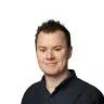As any brand not named Toyota will tell you, breaking into the upper echelon of Australia’s ute market is incredibly tough. Even the mighty Ford Motor Company, which invented the utility vehicle, took decades to crack the code and give the HiLux some serious competition.
Which is why the sudden emergence of the BYD Shark 6 as a popular choice for Australian ute buyers is particularly noteworthy. In the first quarter of this year, the Shark 6 has already become the fourth best-selling model in the 4WD ute segment, behind only the Ford Ranger, Toyota HiLux and Isuzu D-Max. Importantly, that puts it ahead of far more established utes (at least in a like-for-like comparison) as the Mazda BT-50, Mitsubishi Triton, Nissan Navara and Volkswagen Amarok.
In March alone it was the sixth best-selling new vehicle in the country, ahead of the D-Max, making it the third most popular ute behind the Ford and Toyota. That’s a remarkable result for something that is not only new, but also very different. The Shark 6 is the first plug-in hybrid ute to hit showrooms (beating Ford’s much-hyped Ranger PHEV) and it’s clear Australians are open-minded about both the new brand and its new technology.
Personally, I’ve noticed the sudden surge in Sharks on the road in recent months, which didn’t entirely surprise me as I suspected many ‘urban’ ute owners would appreciate its frugal plug-in hybrid engine. But this past week I took a road trip to regional Australia and was stunned to see the Shark 6 had managed to infiltrate the regional market. I noticed several Shark 6s on the freeway hours outside of Sydney or Melbourne, deep in Australia’s rural heartland. A couple had aftermarket canopies and one was towing a horse trailer, underlining the hard-working expectations of many ute buyers.
While this is only anecdotal evidence, it still resonates with me that BYD, a Chinese brand with only a few years of history in our market, could enjoy such cut through with such a different vehicle in such a demanding segment. When you consider brand’s such as Mazda, Mitsubishi and Nissan cannot match what BYD has done so far in 2025, despite their much longer history and experience with utes, it tells me that there is potential for major change in our market.
I’m certainly not suggesting Ford and Toyota will suddenly become also-rans in the ute market, but it’s clear even those two are starting to look over their shoulders. Toyota Australia’s sales and marketing boss Sean Hanley admitted in January that the market is shifting as new rivals pile in.
“We know that ute buyers can look forward to having much greater choice available to them. But despite that, total ute sales are likely, I think, to remain fairly static,” Hanley said back in January. “And the more fragmented segment will make it increasingly difficult for a single model to dominate the sales charts.”
In other words, there’s going to be more choice but the same number of ute buyers (more or less), but crucially, the sub-text of what Hanley is saying is that many modern ute buyers are open-minded about what they buy and are willing to take a chance on something new - like the BYD Shark 6.
And as my road trip to the country suggested, those buyers aren’t just ‘city folk’ and there is a real chance that BYD may become a staple on farms and worksites around Australia.





.jpg)

.jpg)


_0.jpg)
 (1).jpg)

.jpg)
.jpg)


.jpg)
.jpg)
.jpg)
.jpg)




.jpg)

.jpg)
.jpg)



.jpg)